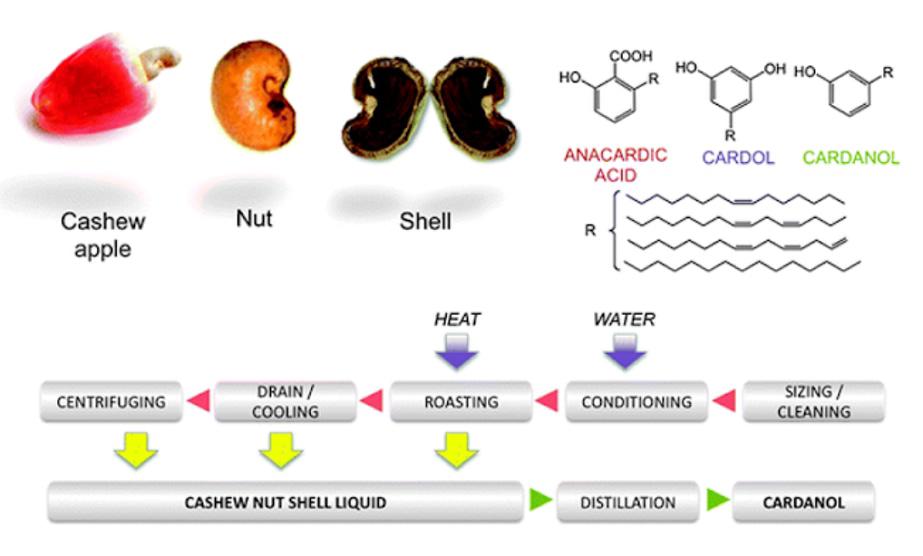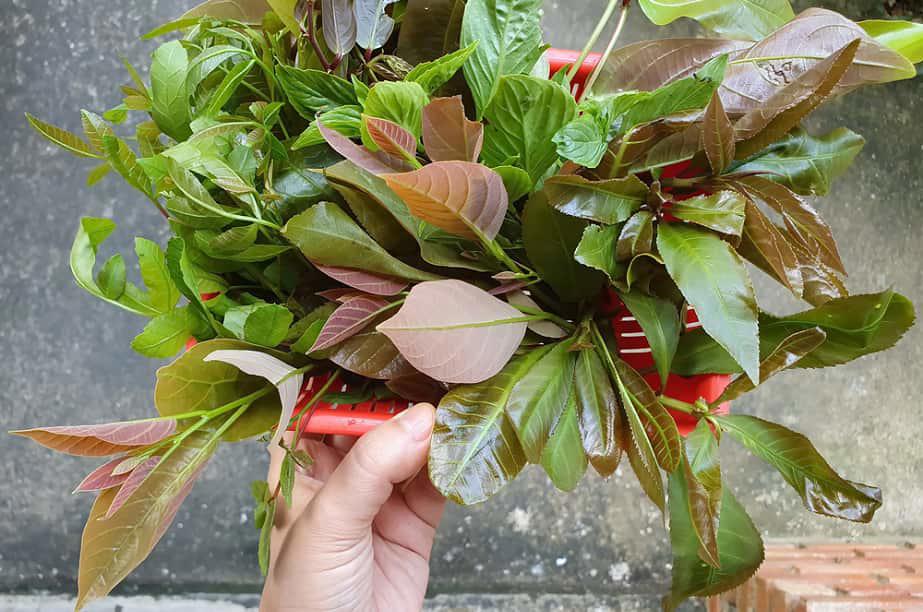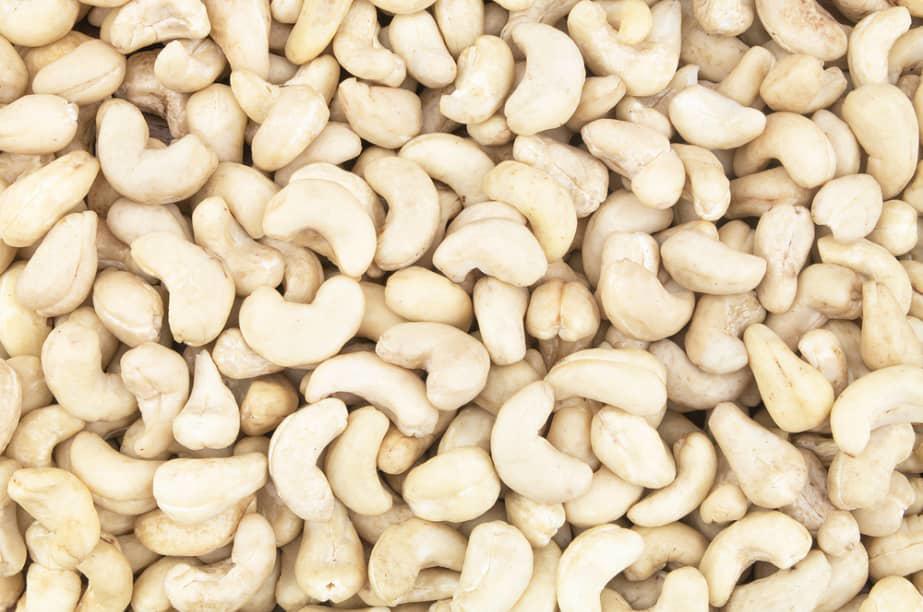For a long time, the cashew tree was only considered a natural and semi-natural tree and was not cared for thoroughly like other crops. The yield of products obtained from the cashew tree were almost ignored because they were considered as a natural gift given by God.
Due to its economic and environmental values, cashew nuts have gradually become an important crop with specific economic goals. Farming and cultivating cashew orchards, therefore, requires proper techniques to achieve a high and stable yield.
Preparation of land
Land preparation includes two stages: selecting a site and implementing starting tasks.
Selecting site
In principle, it should be noted to choose planting areas with climatic and soil conditions suited to ecological characteristics of cashew trees. For cashew plantation, well-drained soil is recommended. The topsoil has appropriate depth and the ability to provide enough moisture for the tree during dry periods of the dry season. It should be avoided by selecting land areas with steep slopes and surface erosion. Also, regions with prolonged low temperatures or frequent frosts are not suitable for cashew plantation.
In addition, the place chosen to grow cashews should also have suitable transportation facilities at a minimum level and labor requirements of the harvest force also needs to be met on time.
These two factors play an important role in controlling transportation costs and ensuring product quality, reducing damage rates and transporting cashew products promptly to cashew processing facilities. For example, in West Africa, There are two criterias related to the above two above factors: the location of cashew orchards should not be more than 3 km away from a residential area and the population density in the residential area should be from 15 - 20 people/km2.
Starting tasks
Once a suitable planting place is selected, the scale of the cashew orchard is estimated immediately based on investment capital, farming method (manual, semi-mechanized or mechanized) and management ability. The next task is to divide into zones, plots, and lots (Internal roads with a road surface of at least 6m wide), plant barriers (casuarina trees, acacia leaves, eucalyptus) against fire and wind (in case the cashew orchard is located in a coastal area or in a place with strong winds). After checking soil conditions, soils with poor drainage, many rocks, thin topsoil or with other unfavorable factors must be eliminated. Besides, weeds and vegetation should be also cleared. covering the entire cashew garden. For undeveloped wasteland, use bulldozers and excavators to clear away vegetation, then use tractors to loosen the soil.
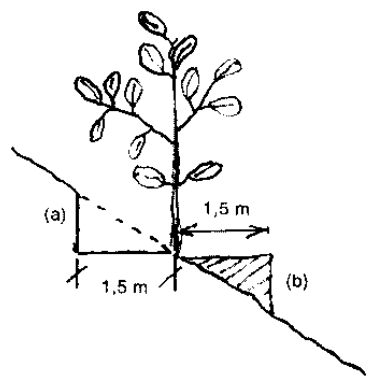
In case of mountainous land where plowing is not possible, it is necessary to cut down trees, uproot them, and then dig planting pits on a terrace (taking the sloping soil above the tree stump (a) and applying it to the tree stump on the slope below (b), the radius of the step circle is about 1.5m). This helps avoid the erosion that peels off the roots and washes away nutrients in the soil.
A careful preparation of the land not only helps increase costs in the first years of planting but also brings many benefits in the future by minimizing the effort to care for the cashew orchards. Besides, good soil will help the cashew tree grow smoothly and bear fruit sooner.
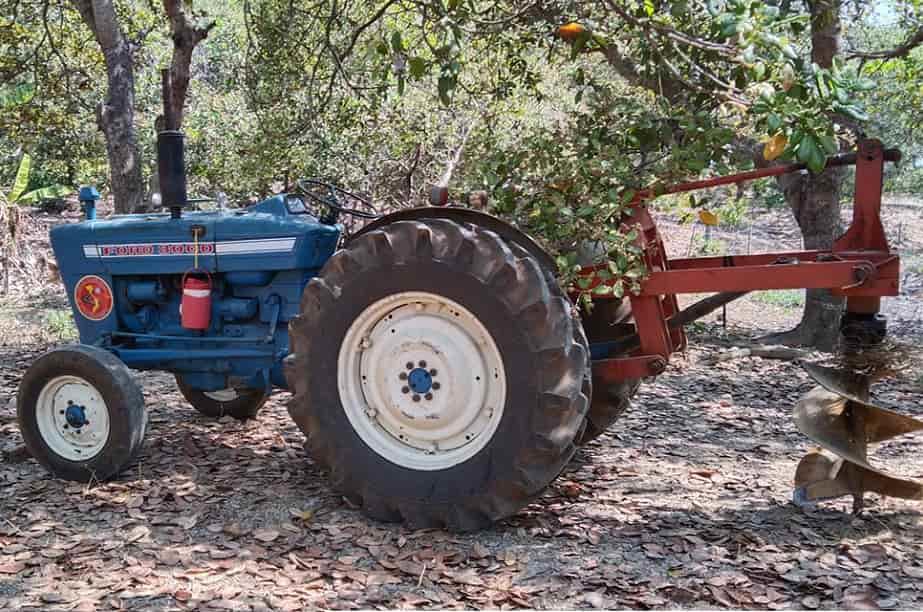
Fig 1. Motor vehicle drilling pits for planting trees
Estimating planting distance
The planting space for cashews is directly related to physiological attributes of the cashew tree and the ecological characteristics of the cashew growing area. Once determining planting distance, it must be ensured that there is no root and edge competition between neighboring trees. Also, That planting spaces are too narrow or too wide will influence overall productivity of the cashew orchards.
That planting space is too wide (tree density/ hectare is too low) will reduce the yield of the cashew orchard in the first years because the land will be fully utilized and weeds will re-grow on the land until this part of land will be covered by canopies of the cashew tree. On the contrary, that a planting space is too narrow (tree density per hectare is too high) will lead to poor plant growth due to the competition of light, nutrients and water in the soil between cashew trees, which reduces productivity and even the life of the tree. There are 2 ways to choose the planting space as follows:
- When the tree is young, plant at a close distance from the beginning to make the most of the sunlight. Thereby, in the first years when the cashew tree begins to harvest, high yields can be obtained, then thin gradually based on the stages of plant growth until the most appropriate planting space is achieved.
Depending on how the trees are planted on each corner of a square, a rectangle or a equilateral triangle with different planting distances, the number of trees per hectare will be different.
Some planting spaces commonly applied in some countries where cashew is grown are as follows:
- In India, planting space of 5 m x 5m (400 trees/ha) and 15 m x 15 m (44 trees/ha) is recommended.
- In Northeast Brazil, cashew trees are often planted at a space of 10 m x 10 m (100 trees/ha) or 8 m x 8 m (156 trees/ha). In addition, they are also planted at a space of 6 m x 6 m (227 trees/ha) and then thinned to a final space of 18 m x 18m (31 trees/ha).
- In Mozambique, the final planting space was 12 m x 12 m (19 trees/ha).
- In West Africa, depending on ecological region, There are some following ways to choose planting space:
+ The best area for cashew plantation (ecological zone 1): initial planting space is 7 m x 7 m giving 169 trees/ha with 2 thinnings: the first time is at 5 years old to get a final space of 10 m x 14 m giving 98 trees/ha after thinning and the second time is at 9 years old to get a final space of 14 m x 14 m giving 49 trees/ha.
+ The suitable area for cashew plantation (ecological zone 2): initially planting space is 6 m x 6 m giving 256 trees/ha and then thinned for the first time at the age of 5 to have a final space of 8.5 m x 12 m giving 128 trees/ha and the second time at the age of 9 to have a final space of 12 m x 12 m giving 64 trees/ha.
+ Area with average conditions for cashew plantation (ecological zone 3): initial planting space is 5 m x 5 m giving 361 trees/ha with the first thinning at 5 years old with a final space of 7 m x 10 m giving 180 trees/ha and the second time at 9 years old to have a final space of 10 m x 10 m giving 100 trees/ha.
Diagram of two thinnings in ecological zone 3:
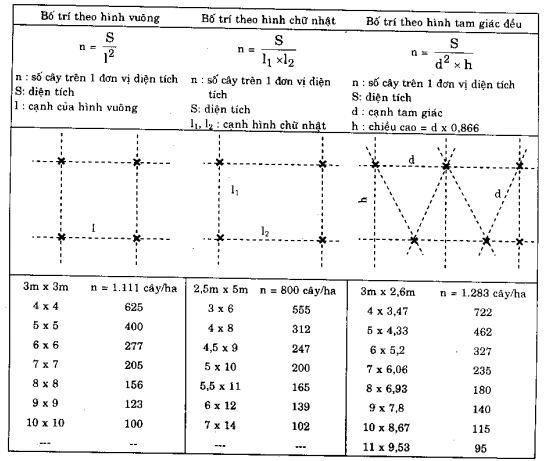
Source: Institute Franaise de Recherches Fruiiieres Outre-mer (I.F.A.C., 1973)
In addition to the above planting distances and systems, because cashew trees bear flowers and fruits on new growth at the periphery of the canopy, Eijnatten C.L. Van and Abubaker A.S. (1983) tested a new planting method: cashew trees need to be planted with rows spaced 9-12 m apart, with trees planted 2-3 m within the row (using vegetative seedlings). Compared to planting on each corner of a square (equal spaces between trees and rows), in this way, the yield and profit per hectare of cashew orchards increased many times. With this method, planting rows in the North-South direction should be done to take advantage of all the sunlight.
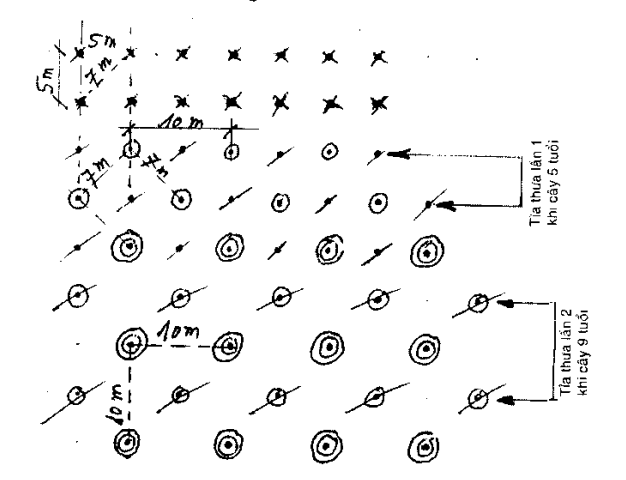
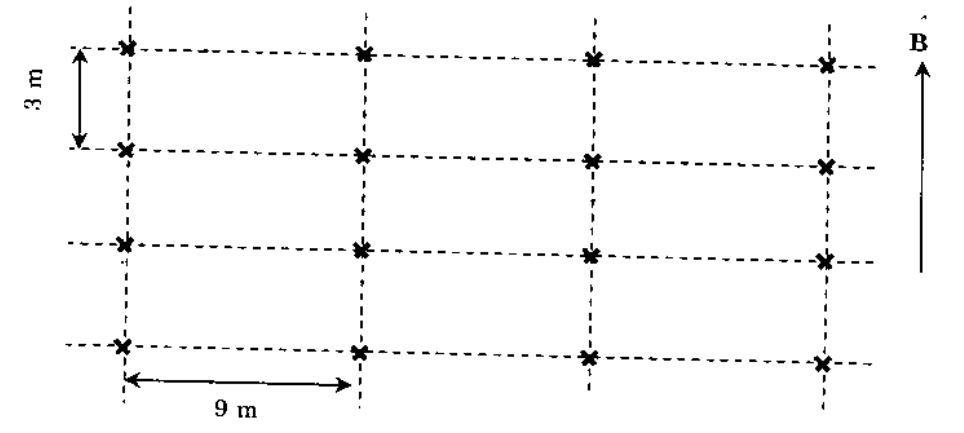
Digging pits
Digging planting pits needs to be done about 1 to 2 months before the rainy season to provide more time for soil solarization. Digging pits can be done manually or mechanically. To manually dig a pit, dig in a box shape with dimensions of 60x60x60 cm or 50x50x50 cm or dig deeper in case of solid soil. To mechanically dig a pit, drill pits with the diameter of at least 30 cm and the depth of at least 80 cm by a specialized hole drilling machine. In case the soil of the cashew orchard is loose and the ground is thick, no need to dig pits. Instead, dig up the soil layer right where the cashew tree is planted.
When digging pits, pay attention to separate the topsoil and the soil below to avoid mixing them with each other. When filling these pits, the topsoil will be mixed with 10-20 kg of manure and filled in first, while the soil below will be filled in later to form a new topsoil layer. The surface of the pits should be filled, about 20 cm higher than the ground surface to avoid water stagnation due to heavy rain, which will damage the tree.
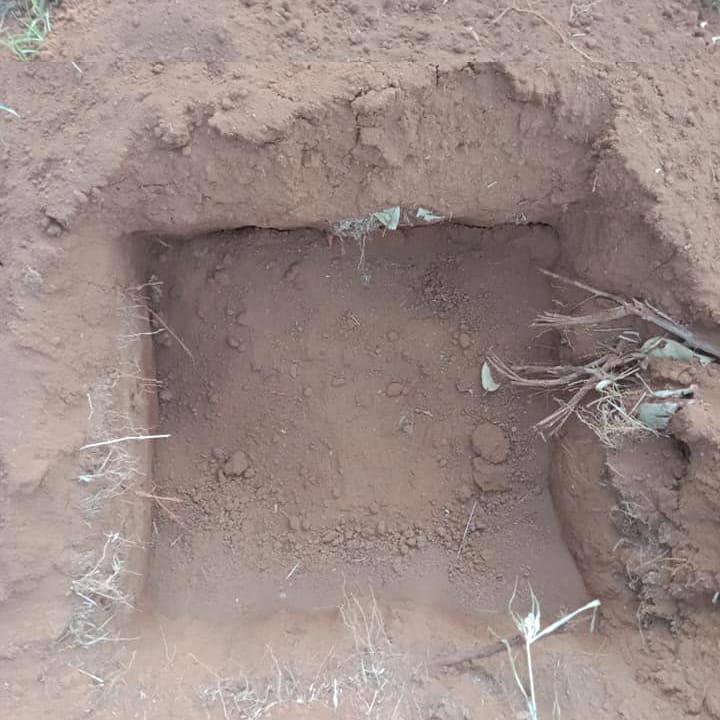
Fig 2. Planting pits
Planting
Cashews can be planted all year round. However, they need to be watered more in the dry season otherwise the seedlings will easily die because of drought. Therefore, cashew trees should be planted in the rainy season to save on watering. The best time to plant cashews is the beginning of the rainy season (from April to July every year).
When it is time to plant, for planting from seeds, only sow the seeds directly into the pits prepared in advance. The method of sowing has been described in detail in the section of sexual propagation method. For planting from seedlings in pots (seedlings grown from asexual propagation: grafting trees, layered trees, etc. or grown sexually from seeds), only choose qualified trees. For planting, remove the potting soil bag very carefully so as not to damage the roots of the seedling, then place it in the middle of the pit and pack the soil tightly around the basin. After a few days, monitor the growth of the tree. If the cashew tree is dead, replant it immediately to ensure a uniform level for the orchard.
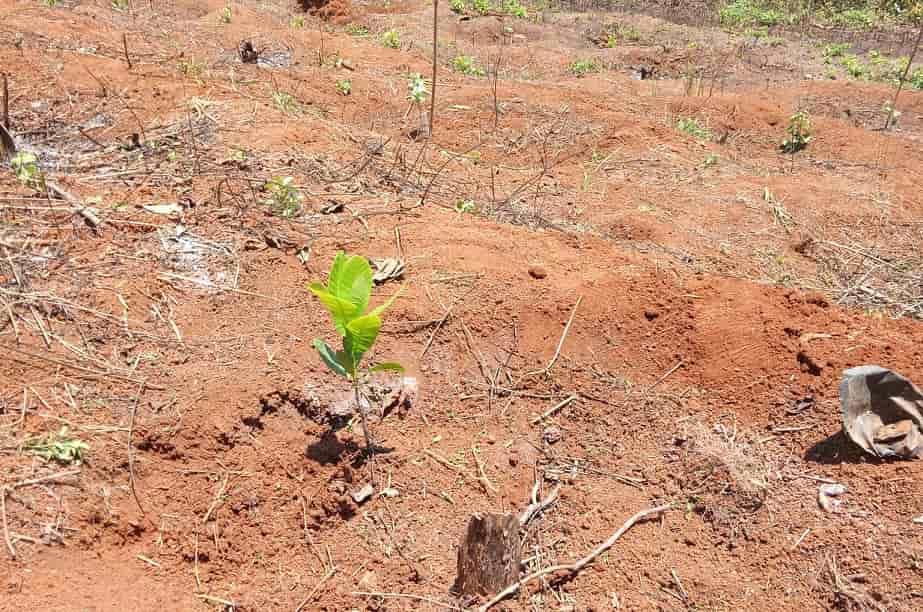
Fig 3. Cashew tree after planting
Intercropping
In the first years, cashew trees’ canopies have not yet developed fully, the ground of the cashew orchard, therefore, has a lot of space left. Short-term intercropping with crops should be done to increase farmers' income. Besides, intercropping helps limit weeds and soil erosion in the rainy season and helps retain the land moist in the dry season. Intercropping with legumes especially helps increase soil fertility and create a natural green of manure.
Short-term crops can be grown as intercrops for cashew orchards such as soybeans, green beans, corn, etc. or legume crops such as hairy beans, ghost beans, yellow flower cassava, etc. In addition, short-term fruit trees such as bananas, papayas, pineapples, etc. can also be intercropped very effectively. As a telling example, Indian farmers planted eucalyptus and teak trees in the early years and got desired results.
REFERENCE:
Thanh P. D. Cashew nuts - Production and Processing (2003).










